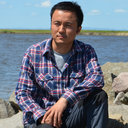Evaluation of estrogenic activity of plant extracts for the potential treatment of menopausal symptoms.
Paraules clau
Resum
Eight botanical preparations that are commonly used for the treatment of menopausal symptoms were tested for estrogenic activity. Methanol extracts of red clover (Trifolium pratense L.), chasteberry (Vitex agnus-castus L.), and hops (Humulus lupulus L.) showed significant competitive binding to estrogen receptors alpha (ER alpha) and beta (ER beta). With cultured Ishikawa (endometrial) cells, red clover and hops exhibited estrogenic activity as indicated by induction of alkaline phosphatase (AP) activity and up-regulation of progesterone receptor (PR) mRNA. Chasteberry also stimulated PR expression, but no induction of AP activity was observed. In S30 breast cancer cells, pS2 (presenelin-2), another estrogen-inducible gene, was up-regulated in the presence of red clover, hops, and chasteberry. Interestingly, extracts of Asian ginseng (Panax ginseng C.A. Meyer) and North American ginseng (Panax quinquefolius L.) induced pS2 mRNA expression in S30 cells, but no significant ER binding affinity, AP induction, or PR expression was noted in Ishikawa cells. Dong quai [Angelica sinensis (Oliv.) Diels] and licorice (Glycyrrhiza glabra L.) showed only weak ER binding and PR and pS2 mRNA induction. Black cohosh [Cimicifuga racemosa (L.) Nutt.] showed no activity in any of the above in vitro assays. Bioassay-guided isolation utilizing ER competitive binding as a monitor and screening using ultrafiltration LC-MS revealed that genistein was the most active component of red clover. Consistent with this observation, genistein was found to be the most effective of four red clover isoflavones tested in the above in vitro assays. Therefore, estrogenic components of plant extracts can be identified using assays for estrogenic activity along with screening and identification of the active components using ultrafiltration LC-MS. These data suggest a potential use for some dietary supplements, ingested by human beings, in the treatment of menopausal symptoms.


